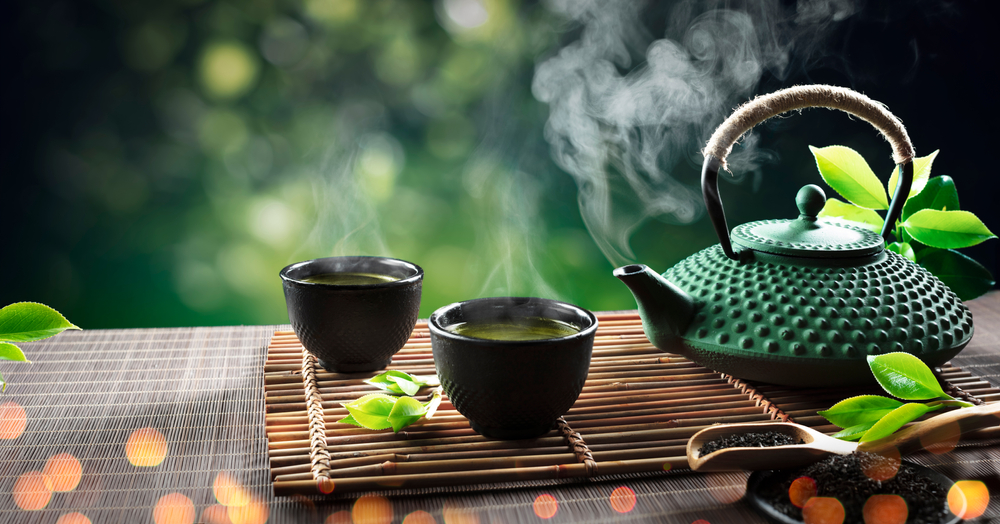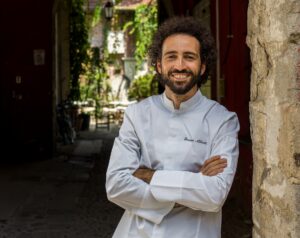Refined ritual art and zen philosophy. Japan is widely recognized as a country of remote
traditions and ancient spiritual roots still relevant today. A history filled with legends and ceremonies that still
today are remembered in all their charm. And the Japanese Tea Ceremony is recognized among the rituals
most famous and representative of the Rising Sun nation.
But what are its origins? And how does this centuries-old ritual take place?
Stories and legends about an ancient rite
There are many tales and legends about the Tea Ceremony in Japan. Among them is one whose
origins are lost in the mists of time and which tells of a skilled tea master, so experienced as to
be famous in his region. One day, for that very reason, he was summoned to the Palace
by the Emperor himself, intrigued by the man's fame. The elderly and slender tea master set about
immediately on his way and was soon before the emperor. Here he performed for the ruler the ritual that
had made him so famous, impressing his distinguished host so much that he earned an honorable
gift: two beautiful Samurai swords. On the journey home, the Tea Master encountered for
case a powerful Samurai who, seeing those valuable swords in the possession of such a humble man, took it
felt offended and immediately challenged him to a duel for the next day. The Tea Master, intimidated but
aware that he could not escape the confrontation, he sought advice from his wise master and on the day
following showed up at the Samurai. And in front of the fully armed warrior, he calmly executed and
precision the tea ceremony, preparing a cup for his opponent as well and presenting it to him with a bow. The Samurai, fascinated, accepted the invitation and, once the ritual was over, declared himself defeated,
then asking the Tea Master to teach him his noble art.
(Source: www.giapponeinitalia.org)
It all began in China...
Tea and Samurai are historically connected by a narrative dating back to the Muromachi Period (1333-
c. 1573), a time when this rite gained notoriety among warriors and merchants. During the contentious Period
Sengoku, during nearly two centuries, the tea ceremony became a formal ritual that had the task of
To bestow harmony and respect even among enemy factions, as well as to keep the samurai's concentration high
thanks to caffeine and theine.
In reality, however, the Japanese Tea Ceremony has its roots in even earlier times, in the
Chinese Buddhist monasteries. Here such a drink was used for medicinal purposes or to stimulate the
meditation, but also for purely social purposes. It was in the seventh century that a Buddhist monk
Japanese, trained in China, imported the drink to Japan. Then, in the 12th century, another monk
Japanese brought particular tea seeds and Zen Buddhism from China. According to that philosophy, so dear
to both Buddhist monks and samurai, Enlightenment can also be achieved by performing ordinary
daily activities, a principle also applied to the tea ceremony.
But how was such a ritual performed? And why is it still so important in Japan today?
Ancient codes of conduct
Like a dance composed of simple but precise and posed gestures. The Tea Ceremony assumed in
Japan a strict protocol, supported by basic pillars such as harmony, respect, purity and
tranquility.
Cha no yu, that is, the traditional Zen rite, differs from aristocratic tōcha, a rite far more lavish and
noisy. Cha no yu, on the other hand, is a clean and simple, silent ritual revisited by the monk Sen no Rikyū
(1522-1592), founder of this type of celebration codified in the style of wabicha, elevation
Of imperfections and essentiality. It was this type of ceremony that became widespread, as well as in monasteries,
also among the samurai and at the imperial court.
The Tea Ceremony Therefore, it follows a strict code that first and foremost concerns the very room in which
this rite is performed, called chashitsu, a place to temporarily get rid of the

worries of life and "emptying the mind." Even the accessories used for preparation and
tea consumption must have certain qualities.
The simplest formula of the Ceremony involves a guest, usually the master, and several
invited. After leaving shoes, daily thoughts and social differences out of the room, the guest
makes tea and sweets called wagashi, distributing them to the guests. These accepted what is given to them
offered, bowing first to the master and then to the other guests. The treat must be eaten
immediately, then you can taste the tea by holding the cup on the palm of your left hand, rotating it two
times with the right, until the decorated side the cup is facing the master. After drinking tea, the rim of the cup is wiped and a few moments are spent gazing at its beauty. At this point the cup should be rotated again but so that the friezed part faces the host holding it.
Japanese Tea Ceremony Today
There are many rules to follow during this traditional ritual, but this does not mean that not everyone
can participate in the ceremony. There are many places in Japan where such
celebrations. Nowadays, among other things, there are many people who frequent tea rooms to evade
For a few hours the stress of everyday life.
What about foreigners? They too can participate in these ceremonies, which are specially simplified for them,
so that they can benefit from this experience that gives serenity and inner harmony. A type of
all-Eastern philosophy, as fascinating and unforgettable as the traditions of this now modern but
From a deeply spiritual soul.








